#like he COULD be younger than 50 depending on how old Harrow is (though i tend to skew all the adult characters older)
Text
ngl I would pay someone actual money to go to a writers Q&A and ask if they can tell us what happened to King Atticus or if that will be revealed elsewhere
#like on the one hand he's not very old#like he COULD be younger than 50 depending on how old Harrow is (though i tend to skew all the adult characters older)#something something millennial sensibilities about having children later idek my mom had me in her 30s it's what i'm used to#but on the other hand no one seems all that broken up about his death???#which idk i'd expect harrow to have some feelings beyond 'will i be a good king'#if he SUDDENLY lost his father who should have lived at least another 20+ years#like was he fucking assassinated? everyone's pretty blase about assassinations tbh seems like a common career risk#'we've fought off plenty of assassins before (except for the time they killed my dad)'#king atticus
6 notes
·
View notes
Text
The Pownall Massacre

TL, DR: Too complext to summarise. Sorry, you have to read through this. If you want to, you can skip to Part IV to read what I think really happened.
There is but one certainty with historical events - that they can and most likely will be interpreted differently depending on the eye of the beholder. Our own upbringing, socialization, education, sexuality, gender etc. can all cause us to be biased when interpreting historical events. There are always different "truths" depending on who you ask.
As a simple example most readers would be familiar with lets take a look at a "great" US President, George Washington. If you would have asked a Native American of the time about George Washington he would have called him a destroyer of native villages who led massacres. If you would have asked a loyalist, he would have considered Washington a traitor to the crown. If you would have asked a member of Washington’s army in the Revolutionary War, he would have hailed Washington as a great hero. And if you would have asked his slaves....
This is no less true for the period of "Manifest Destiny" and westward expansion of the United States during the 19th century. What looks like massive land robbery, ethnic cleansing and even genocide to the outside (modern) observer might also be romanticized as the era of brave settlers and brave cowboys, the era of daring people prevailing against adversity to secure a better life for themselves. Modern Media has (regrettably) largely chosen the later path.
Please keep the above in mind when considering everything that follows in this posts. Also, please note that this is a theory built on evidence from the show - but this theory has not been explicitly confirmed by any of the show writers.
Part I: The historical context of the Pownall Massacre.
Understanding the historical context is the most important thing when it comes to interpreting past events.
All sources agree that the massacre happened 150 years before the time the show starts, so somewhere in the vicinity of 1868. By this time Washington State had already been settled by native Americans for close to 14.000 years (thus giving us the earliest possible form of divergence between humans and sirens).
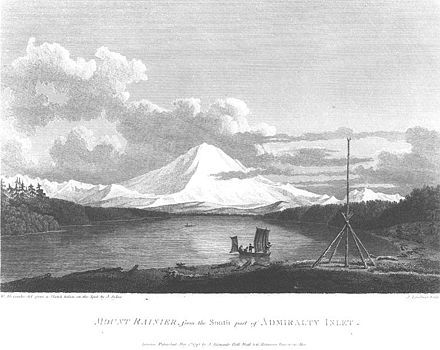
Native Americans hunting ducks, taken from Wikimedia Commons
Native American villages of the time seem to have been mostly concentrated on the coasts and near rivers, being focused on salmon fishing, hunting and gathering berries/roots etc. You can see how Washington is a perfect setting for the Siren story - even before the arrival of the white settlers. The most prominent of those tribes seemed to have formed what is called the Salish language community.

The salish language family (from here).
The earliest contact between the natives and Europeans happened during the spanish mapping expeditions of the Northern American coast. One such ship, the Santiago, was captained by Bruno de Hecata. You can read a bit about his expedition here.
Unfortunately this ship also carried a deadly cargo - smallpox. This disease resulted in a harrowing smallpox epidemic which killed at least 30%, if not 50% of the native population (approximately 11.000 - 20.000 people). Even though the introduction of the disease was unintentional (indeed a third of the Europeans themselves died from it) these events proved fatal to the strength of the local populations. This blow allowed northern tribes like the Haida to muscle in on the territory of the local tribes. .
[Sidenote: For those of you who would want to read more about this I suggest Robert Boyd: The coming of the spirit of pestilence. Introduced infectious diseases and population decline among Northwest Coast Indians, 1774–1874 (Seattle 1999). Be warned, it makes for grim reading.]
Eventually, British fur traders and settlers arrived on the scene. In 1790 Spain and Britain reached an agreement that gave the British free reign over the Northwest coast. In 1805 the Lewis and Clark expedition reached Washington and the USA entered the struggle for dominance over the region. Britain however gained dominance due to the war of 1812 and the Hudson Bay Company eventually became the most important fur trader of the region. These early years were characterized by a high rate of intermarriage between fur traders and local women, as well as the introduction of European technology and European goods, most importantly firearms.
However, in the 1840s large numbers of American settlers trekked westwards and started settling Washington State. Soon outnumbering the British fur traders and local natives (who seemed to have fallen into some form of uneasy coexistence), this formed the basis for what was later called the Oregon dispute between Britain and the United States.
In 1846 the Oregon Treaty ceded Washington State to the USA and settlement began, with all the negative effects this had on the local population - disease, land robbery, ethnic cleansing and genocide. In 1862 another devastating smallpox epidemic broke out, again killing roughly one-third to half of the remaining indigenous population.
If the massacre happened in 1868 then it would have happened during a time which was filled with strife. The boundary dispute between England and the USA had not been fully resolved yet (it would only be resolved through the mediation of the German Empire in 1872). The community of Bristol Cove would have been at best a few decades old (and probably was significantly younger, maybe only having been formed in the 1850s). There might have been bad blood between ex-British and American members of the community. The native population would have suffered from the devastating smallpox epidemic only a few years earlier and I highly doubt the natives had surrendered the prime fishing grounds willingly.
The settlers and fishers of Bristol Cove themselves would have been hard men who had suffered through the deprivations of the long trek westwards. The fact that most of them would have been adventurous young white men without many suitable marriage prospects is also problematic as historically a surplus of young males has nearly always led to conflict. Judging from the town's football team being called the whalers and the harpoons being found in Helen's shop it seems that Bristol Cove primarily was a fishing and whaling town - two profession that require men that are comfortable with killing what they perceive as animals.
In short it does not require much imagination to view the Bristol Cove of 1862-1870 as a powder keg waiting to explode. All it needed was the right man to lit the fuze.
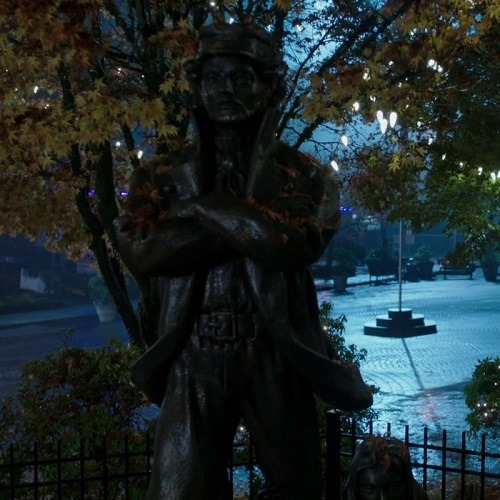
(Enter Charles H. Pownall, aka literally Hitler)
Part II: The sources covering the massacre
Let's look at the sources covering the massacre and try to decipher what they are telling us about the massacre and the reasons for it.
a) The official human version
The official version of what happened during the massacre is that essentially no massacre happened at all and the entire story is presented as a fairytale for small children. It is used as the centerpiece of the annual mermaid festival, being used to draw in tourists and bored college students looking for an adventure.

(Tfw your family history gets appropriated by college girls looking for an excuse to paaartaaaay.)
The Timestamp for the official human version is 4:35 - 5:10 of Episode 101 "The mermaid discovery".
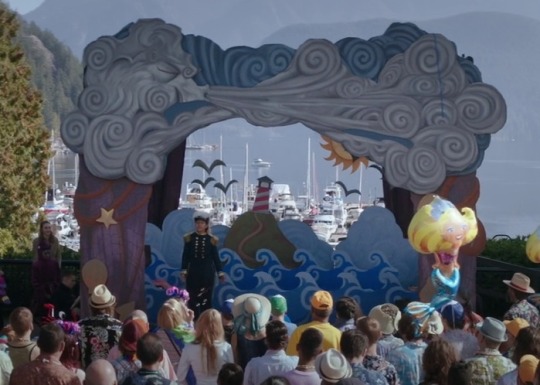
(how lovely, a play about genocide. With Children in it. What could go wrong?)
NARRATOR: "It was more than a 150 years ago when a local fishing captain, Charles H. Pownall, fell in love with a mermaid in these very waters, enchanted by her beautiful siren song."
POWNALL: "I love you fishermen"
SIREN: "I love you mermaid"
NARRATOR: "But one day, he went to the bay, and his mermaid was gone, back to her home in the sea, never to return."
NARRATOR: "And that is how thanks to Charles H. Pownall, Bristol Cove became the Mermaid Capital of the World"
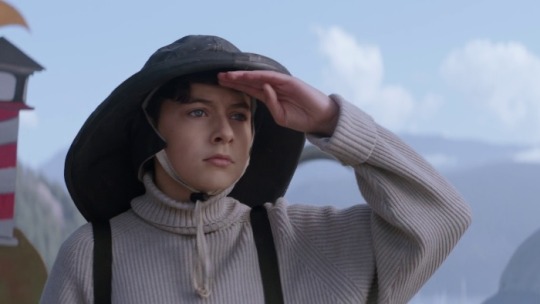
(Is it my mermaid that I see there on the horizon? No, just a giant whitewash,)
The depiction of an episode of violence against other populations as a fairytale is not a new idea. For example, take the story of Pocahontas. Popular knowledge focuses on the fairytale aspect of this historical story (native Powhatan "princess" Pocahontas rescues brave white explorer John Smith) but nearly all popular retellings omit the continuation of that story - how the brave explorer John Smith continued to raid the food stores of the Powhatans, how the white colonists massacred the Powhatans, took their lands, assassinated their leaders and drove them into pitiful reservations. (Put THAT in a movie, Disney).
As such, this story fits the archetype to a T. And yet there are a few facts in the official version that merit a mention:
The official human version claims that Pownall was enchanted by the beautiful siren song (which would mean that the siren would have taken the initiative to make contact with Pownall)
The mermaid in question disappeared without a trace, leaving Charles to look for her with no success
b) Helen's books
Another take is being presented in one of Helen's books aptly titled "An Illustrated History of the Mermaid", which features the mermaids of Bristol Cove in a chapter. Sadly the chapter is truncated and we only see the first page of it in detail - while other pages also show text, freeze-framing and enlarging them sadly showed them to be taken from a book on schooners and a book about the Napoleonic wars - a common trick by TV shows to save valuable time writing those props.
The page dealing with the massacre is shown in Episode 102: “The Lure” as follows:

(Pls Maddie move your hand a bit lower? Pretty pls?)
I have transcribed the visible text:
The Mermaids of Bristol Cove
Being a true account of the bitter and broken heart of a Fisherman and the retribution that was exacted by Men of the Land upon the Maidens of the Sea
The proud men of Bristol Cove were renowned up and down the western coastline of the Americas for their craft and Bravery upon the waters of the Pacific Ocean.
The men abord Captain Pownall's ship were especially known for their prowess upon the waves and their seemingly supernatural ability to find and capture more fish than any other craft. This ability was attributed to more than mere craft. It was whispered, in certain coastal taverns, that Captain Pownall himself was responsible for his own share of the bountiful harvest. It was rumored that the captain was [illegible text] a mermaid and that it was [illegible]and the deep that had resulted [illegible] his curious [illegible] five years[illegible]
This text is really short on details for its length. What we get out of it is a timeframe (five years) and a lot of fluff about the skilled and brave men of Bristol Cove - and that the relationship was also based on mutual fishing cooperation. However, the headline already tells us what interpretation the story will use here - that Pownall and the mermaid fell in love, she then broke his heart and the "brave and skilled" fishermen exacted retribution by massacring them. I was expecting some brazen apologia but not one this brazen. Yeah, some eeeevil woman(tm) hurt you by leaving you, go murder her relatives in revenge. That makes you "brave and skilled".
Excuse me for a second while I find the nearest container to throw up in.
[Sidenote: Painting genocide as a tragedy while also arguing the victims deserved getting massacred is par the course for colonial apologia of the 19th century. Even in the 20th century Turkey for example justified its genocide of the Armenians by arguing that it was "just" a relocation that got out of hand due to Armenian banditry. This text fits well into all the other 19th century texts that allegedly deplored violence against indigenous people while similarly arguing that this could all have been avoided if the darn natives had not been so unaccommodating. Feel free to imagine a lot of fake pearl clutching as a side dish to all that juicy victim blaming.
I commend the writers of Siren for actually writing such a text for it shows their attention to detail but this was infuriating to read.]
c) The Pownall family history
Lets hear it from the direct descendants of Charles "stil literally Hitler" Pownall. Ben confronts his father after meeting a mermaid himself and nearly becoming the evening snack of said mermaid (no, snack is not used euphemistically here.) The conversation takes place in Episode 102: "The Lure" from 19:00 - 20:40.
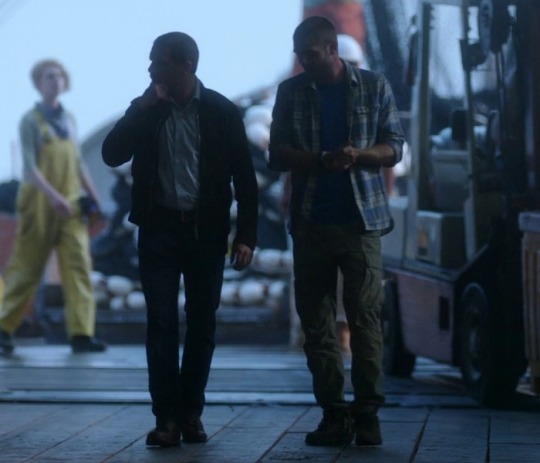
(...So...uh...about great-great-great-great-grandpa...)
I have transcribed the relevant parts:
BEN: "I wanted to ask you something. I remembered that you and Grandpa used to talk about Charles Pownall, about what really happened back then."
TED: "You really came here to ask me that?"
BEN: "Yeah.”
TED: "Why the sudden interest in the family history?"
BEN: "I ran into Helen Hawkins.”
TED: "Oh, c'mon."
BEN: "Dad? Maybe I'd show up to more family events like the statue unveiling if you told me the real story about our family."
TED: "All right. Look, Charles might not have been exactly who we make him out to be. I can't say for sure, but there might have been some mental illness, maybe even schizophrenia. Long months at sea, a constant stream of booze and, uh, well, he was seeing things. [chuckles] Mermaids? You know this. You did the play in school. That's how the town got its folklore. Now, as for Helen and her stories, well, we all know she's got a vivid imagination."
BEN: "That's it?"
TED: That's it."
Additional info about the Pownall Mermaid is delivered to us in the form of a conversation between Ben and his father in Episode 110: “Aftermath”. It starts from 21:30 and ends at 23:00.

(Don't mind me getting defensive here about not giving you all the information you asked for earlier)
TED: "Look, Charles had an affair with a woman in town, okay - she worked at a local bar...a brothel."
BEN: "Wait, so she was a prostitute?"
TED: "You can imagine...an extramarital affair, a child born out of wedlock with a woman in that profession - these aren't things people talked about back then. Every family has its secrets, Ben."
BEN: "This isn't some kind of ancient history, dad. I have a relative living in town that I've known my whole life."
TED: "You know our family Ben. This kind of history, nothing they'd want out there. Why dwell on the ugliness? Okay, Charles was a troubled guy. We talked about that. From what I understand, he had a lot of demons."
From these two conversations we get not only a lasting impression that Ted is knowing more than he lets on but also a lot of relevant information:
Charles Pownall suffered from alleged mental illness, maybe even schizophrenia - or something that made it appear as if he did.
Charles liked his booze, maybe too much
The mermaid was according to Charles family a woman of ill repute
Charles was already married when he met the mermaid and when the baby was born
The Pownall family has been paying Helen's family off to keep quiet.
d) The Siren sources
In Episode 209 “Street fight”, Ryn tells Ben the Siren side of the story.

(”Story? No, not story. Real”)
The conversation starts at 11:50 and ends at about 13 minutes.
RYN: "There was one of us who spent time with a human long time ago. She lived with him on land. Together they had little one."
Ben: "A child?"
RYN: "Yes. But the child was not normal, not look normal. He took it away from her into the woods. He killed their child. So she went back home in the water. But this made him angry. His head-bad. He brought many men, and they killed us. So many of us that...the water was red with our blood.
Ben: "Helen told me that story. Not about a child though."
RYN: "Story? No, not story. Real."
It is interesting that as much as the human sources place the blame on the Sirens, the Siren side of the story places the blame just as squarely on the humans. What we can take away from this version is:
The mermaid lived with Charles on land and they had a child together.
The baby was deformed and thus Charles took it into the woods and killed it.
The mermaid left Charles whose head then went “bad”.
Charles took his men and slaughtered them in the water.
e) The Hybrid sources
Perhaps the most important tidbits of information come from Bristol Cove's resident mermaid expert, Helen Hawkins, in Episode 110 "Aftermath". The conversation starts at 16:12 and ends at around 18:50.
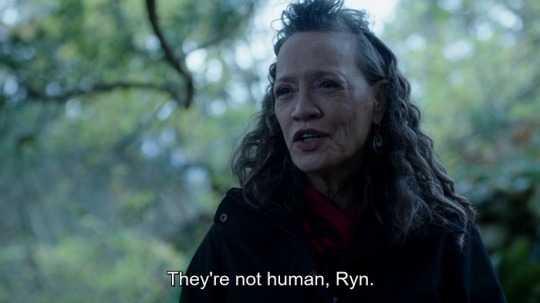
(Lemme just drop some knowledge on you children...)
HELEN: "She was the first. She was the daughter of Charles Pownall and his mermaid."
BEN: "The baby is buried here? Ryn told me that Charles killed his child."
HELEN: "Oh no. [to Ryn] That may be what your colony believes, but that's not what happened. The baby was born in transition and appeared deformed, a soul caught between two worlds. Charles knew that the doctors of Bristol Cove would see her as an abomination and refuse to treat her. The Baby was gonna suffer and die. So he took her into the woods."
MADDIE: "To put her out of her misery?"
HELEN: "No. He brought her to bigger minds than the doctors of Bristol Cove. To people who weren't afraid of shape-shifters."
MADDIE: "The Haida"
HELEN: "Yes.
BEN: "She lived?"
HELEN: "The Haida helped her to complete her transition and she lived for a very long time. I am her last living descendant."
BEN: "You*re one of them?"
HELEN: "That's right. One-eigth to be exact."
MADDIE: "Ryn, did you know this?"
RYN: "Yes. I sense she is one of us. But I did not know the child lived."
Helen claims that:
Charles took his daughter to the Haida to find help for her
The Haida were able to help the hybrid daughter
The daughter lived for a long time in Bristol Cove among humans, eventually dieing there
Part III: Literally Hitler? The trouble with Charles H. Pownall

(Look at him. He is just standing there. Menacingly.)
Much of how we view the massacre is dependant upon how we assess the character of Charles H. Pownall himself. It is easy to think of him as a typical machismo of his day, a ruthless conqueror who was blinded by his own sense of superiority, who could not handle rejection and committed genocide in revenge. There might be some truth to that interpretation - after all, the people who settled Washington were not exactly enlightened liberals.
And yet we know some facts which are unquestionably true (because otherwise Helen would not exist) that paint a different picture of Charles H. Pownall. When faced with the problem of his daughter's life being in danger, Charles acts rationally and decisively. He seeks out help from the only people who know how to deal with hybrids, the Haida. Doing so was not a small task considering the troubled times the Haida were facing due to the arrival of the white men and such an endeauvor might have easily ended with Charles being killed. But he persevered, the Haida managed to save his daughter's life and when returning to Bristol Cove Charles he took great care to safeguard his daughter's future.
He organized regular funds to be paid to her and her eventual descendants and concocts a story to tell his family as to where this mysterious daughter suddenly appeared from and why they needed to pay her to keep her quiet (her being the alleged daughter of a prositute he had relations with). Admitting to a child born out of wedlock in those days had the potential to ruin a man's career and honour and thus his place in society so this was not a trivial thing to do.
Those two brave actions mentioned above are hardly those we would expect from a bloodthirsty genocider only concerned with himself.
Yet how do we reconcile this image of a at least somewhat caring father with the image of a madman slaughtering Sirens on the water? There might have been a logical reson for Charles turning into a monster.
Both the Siren version of events and the Pownall family history mention that Charles suffered from mental problems which Ted characterizes as schizophrenic behaviour, seeing things and acting besides himself. What do we know of in the show that causes visions and causes people to act as if they are suffering from mental illnesses? In fact these are the exact symptoms people suffering from the Siren Song (Ben) or people suffering from withdrawal symptons (Chris) exhibit. Without having access to the song anymore and the only recourse being self-medication with alcohol (psychology was not exactly a practiced medicine back then, nor did MRIs exist), is it any wonder that his mental state deteriorated? It might be that the Charles H. Pownall that perpetrated the massacre bore little resemblence to the Charles H. Pownall that his mermaid fell in love with.
This might be a way too charitable interpretation of events. After all, not everybody suffering from an addiction and brain damage starts to commit genocide. However, at the very least Charles should be considered more than the black hat as which he appears in the Siren version of events (the sirens perception of him is also colored by him allegedly murdering his daughter which which never happened). Him being more of a grey character would also be in line with all the antagonists we see depicted in the show so far. Take for example Nicole, the main antagonist of Season 2 - while she lies and manipulates everything around her in order to get Ryn to cooperate with the military she is not entirely devoid of compassion. I think that therefore the interpretation of Charles H. Pownall as a more grey character fits better with this show.
This of course does not excuse his genocidal actions in any way. But it might serve as an explanation for them.
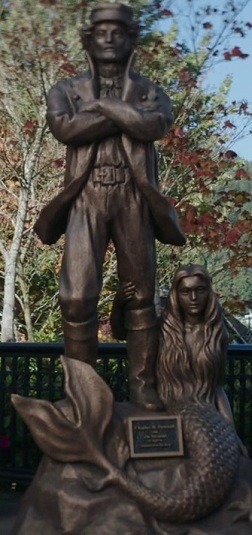
(Maybe not quite Hitler after all)
[Sidenote: I still hate the submissive pose the Pownall family chose for the statue of the mermaid, even if it fits the story the humans are trying to tell.]
Part IV: An attempt at reconstructing the events leading up to and including the massacre
As mentioned in the intro to this post, every group involved in an important and traumatic event has their own versions of the truth. This does not mean that each group necessarily lied or had a hidden agenda/hidden truth. Each version of the story (except for the two human apologia pieces already mentioned) might have been honest conclusions based on incomplete information.
So what are the facts of the story which we can reconstruct while trying to reconcile all the different pieces of information and using all information that we know not to be demonstrably false?
In the years between 1863 to 1868 Charles H. Pownall met a Siren. It might be that this Siren was actively looking for somebody to live with or to cooperate on fishing with (possibly due to the indigenous populations she used to fish with being decimated by the devastating smallpox epidemic of 1862).This cooperation led to Charles H. Pownall becoming the most renowned and wealthiest fishermen of Bristol Cove and might have continued for five years in total.
[Sidenote: The reasons for those cooperation might have been similar to those that causes other ocean predators to cooperate with humans in reality. See for example the Australian “Law of the tongue�� or the Brazilian dolphin-human cooperation.]
Some time during this cooperation the mermaid and Pownall fell in love. Maybe she sang to him from the start, maybe she only sang to him after she realised she loved him. (Note that no version at all mentions that Pownall caught her so the approach was most likely consensual. Especially considering how forward Sirens can be I find the idea of the Siren initiating contact - and maybe even intiating the sexual part of the relationship - believable).
[Sidenote: In previous human-siren interactions - as the ones I postulated for the Haida in my earlier piece - this relationship would not have been a problem. The Haida and Sirens knew how to interact with each other as well as the dangers that could happen from exposure to the Song - as did the Sirens. The mermaid most likely thought the settlers would have knowledge of the problems as well. It might have been an innocent mistake to assume that. But the culture of the settlers would have been anathema to such a relationship. Having a female co-captaining a ship in the 19th century would have caused great offence, especially if she was sleeping with the married(!) captain to boot. As such, society would have almost certainly put trememndous pressure on the relationship even if the wider settler population might not have known that she was a mermaid.]
The Siren and Charles conceived a child together. The pregnancy resulted in a difficult birth with the baby caught halfway in transition. To the settlers the "deformed" baby was considered an abomination, maybe even a punishment from god for breaking the vows of marriage.
In desperation, Charles takes the baby to the Haida. He successfully pleads for their help only to discover his mermaid missing when he returns.
[Sidenote: Had the Haida been the dominant population at Bristol Cove at that time the birth of a hybrid would not have been a problem. Guess ethnic cleansing does come back to bite you in the behind after all.]
The Siren, assuming that Charles went into the woods and killed their child, had left for the water during his abscence, never to return.
[Sidenote: This part is the one which I find hard to reconcile. I find it hard to believe that Charles would have known to take the baby to the Haida without his Siren telling him. In any case, I find it hard to believe that he just left Bristol Cove with the Baby without telling her what he was intending to do.
Or maybe there is another explanation. Maybe she assumed that the baby was dead because people told her so? There were certainly plenty of people with motivation to get rid of her. Charles' human family, moralists opposed to children born out of wedlock, competing fishermen trying to rid Charles of his competitive advantage, religious zealots or plan old racists and bigots - and those are just the human factions. There might also have been Siren factions opposed to mingling with humans - imagine a 19th century version of Katrina - do you think sirens like that would have shied away from sabotaging such a relationship or even shied away from making one of their own disappear?]
Alone and with no access to the song - nor to any cure - Charles’ mental state deteriorated to the point of no return, his condition worsening due to self-medication with alcohol. It is quite likely that he did not understand what was happening to him.
[Speculation: Eventually - maybe with some "assistance" from some of the anti-Siren factions mentioned in the previous sidenote - he started blaming the Sirens for his mental problems, maybe even for taking away the siren he had fallen in love with.]
In 1868, after an unknown period of suffering excarbated by alcohol abuse, Charles H. Pownall, with the help of his shipmates surprised the sirens near the surface and massacred them.

The Sirens subsequently severed all human contact and went into hiding, forbidding any Siren to go on land and teaching their children to avoid the land.
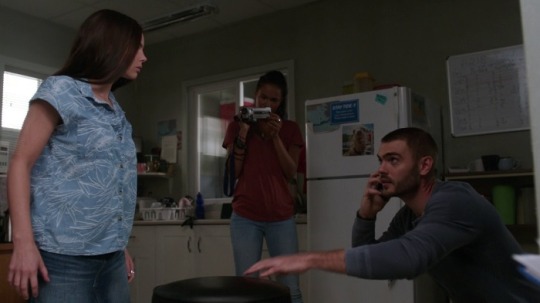
(”Land bad. I learn this.)
The Hybrid daughter of Charles and his mermaid lived and prospered, despite being shunned by the rest of the Pownall family for allegedly being the daughter of a local prostitiute.

(”She was the first....”)
Acta est fabula. Clamate.
Addendum: The observations about the parallels between Ben and Charles and Ryn and Charle’s mermaid can be found here.
#Siren#siren freeform#freeform siren#charles pownall#long post#analysis#Pownall Massacre#ryn#Ben Pownall#helen hawkins#when you write about a massacre and realize the story was probably more heartbraking than you thought in the first place#I think I need a drink#jeez this was grim#pls excuse spelling mistakes I am le tired
27 notes
·
View notes